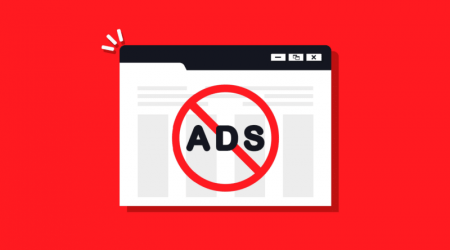Businesses can easily neglect the optimization of organic traffic. This happens because stakeholders often don’t understand how it works or its impact on company goals.
Continue reading and learn how to translate SEO concepts into business terms so you can onboard your business partners and secure their buy-in for organic projects.
Improving customer experienceCustomer experience is one of those aspects of the business that almost all leaders agree is super important. And it can’t be different when 52% of customers say they will switch to a competitor after a single negative impression.
But which SEO factors have an impact on it?
1. Broken pages and redirectsBroken pages (like 404 or 500 errors) and implementing redirects are usually business priorities. This is because stakeholders are also online users who likely encounter these issues and understand the frustration they cause.
Cleaning up redirects, however, is another story. Users don’t see the change, but as SEOs, we know that excessive redirects can hurt a website’s performance.
Redirects consume search engines’ crawl budget, dilute page authority and negatively impact speed performance. But how do you explain this in business terms?
One of the easiest ways to explain this is with everyday examples, which people can easily relate to and probably have experienced.
In the 301 case, imagine you have a shopping list, but when you arrive at your local grocery store, you find the store has moved, adding 20 extra minutes to your shopping trip. Even though you’re “redirected” to the new location, you’re frustrated by the extra step.
The same happens with search engine bots when they encounter redirects. Too many redirects can frustrate them, leading to a potential negative impact on your site’s ranking. Similar to a negative customer review.
We all know the impact of negative reviews – the next potential customer will see them, and it may influence their decision to buy from you.
2. On-page SEOThe concept of optimizing individual webpages to rank higher and earn more relevant traffic is a key one in SEO. It is very similar to merchandising practices in the offline world, and its goal is to keep users and bots engaged with your content.
The higher the engagement, the lower the bounce rate, which can improve your rankings (or at least we have a strong reason to believe this after the recent Google documentation leak).
Keeping users engaged increases the time spent on the page and the visibility of important elements like CTAs.
This is similar to how supermarkets place essential items like bread at the back so customers can see other products as they navigate the store, enhancing product visibility.
Just as customers might end up with a basket of unplanned items in a supermarket, good on-page optimization can lead to increased leads and a healthier sales pipeline.
3. Page speedPage speed is another important factor for SEO and overall user experience.
Slow-loading pages can lead to higher bounce rates, as users are likelier to abandon a site that takes too long to load. We all know how frustrating it is to see how the images load or to need to wait too long to be able to click or scroll.
It is the same as when you walk into a coffee shop for a quick morning coffee on a street full of coffee shops. If your order takes too long, you will probably go elsewhere the next time.
The same principle applies to your website. Just as efficient service in a coffee shop enhances customer experience, a fast-loading website ensures that visitors stay engaged and are more likely to return. And search engine bots are like picky customers who won’t tolerate slow service.
Optimizing your website for a good page speed can increase the loyalty from both humans and bots and can likely lead to higher rankings and sales.
Get the daily newsletter search marketers rely on.
Business email address Subscribe Processing...See terms.
Enhancing lead quality and conversion ratesGood customer experience is not the only factor in having a successful business.
You need to make sure that you attract the right customers – the ones with the highest chance to buy from you and that you give them enough reasons to do so.
On the online front, you have a couple of SEO allies to help you in this effort.
4. Meta titles and descriptionsBy the clothes, they greet by the mind they send. This proverb is also true in the search engine world.
Making a strong first impression online is as vital as in any business setting and your meta title and description are the key players here. They are crucial for how bots and users perceive your webpages.
The title tag is the first thing users see and serves as your digital business card. It should be concise and clear and immediately convey your page’s value. The meta description is your elevator pitch. It offers a brief summary that should give users a reason to click on your result.
Just as a good introduction can lead to business engagements, well-crafted meta titles and descriptions enhance click-through rates and improve search engine visibility.
They also ensure that potential customers see the best of what you offer at first glance – the same as a very well-designed and decorated shop window.
Better meta tags can improve the conversion rate of leads entering the sales pipeline, as they set the right expectations. In some B2C businesses, where purchase decisions are quicker and emotionally driven, effective meta titles and descriptions can also increase the number of closed deals.
But good meta titles and descriptions can’t be created without preliminary research.
5. Topic research and content strategyUnderstanding market trends and customer needs is crucial for any company and usually starts with deep-dive groundwork.
For example, when you plan to launch a new product or service, you have a preliminary discovery phase. Its goal is to clarify the details around your offer and launch something that has a good chance of being bought by your customers.
The same approach applies to your online presence, but instead of market research, you conduct topic and keyword research before creating your content strategy.
You can create relevant content that meets its needs by understanding what your audience searches for.
Effective topic and keyword research improves traffic quality, increases conversion rates and MQLs and nurtures leads through the sales funnel.
6. Structured dataStructured data is another powerful SEO tool that can enhance lead quality and conversion rates. These pieces of code are not directly visible to users, but they provide search engines with clear, specific information about your website’s content. They are like nutritional labels on food packaging.
Structured data enables search engines to display richer and more relevant search results, including enhanced snippets, product details, review stars and other elements that make your results more attractive to users. This leads to higher click-through rates and potentially higher conversation rates.
Building brand reputationImproving lead quality and customer experience is crucial for businesses’ everyday survival. But to set the stage for long-term success, you need to invest also in building your brand reputation.
The reason is simple: the purchasing decisions of 63% of consumers are impacted by the company’s reputation, according to Qualtrics.
7. Internal and external linksCreating unique connections through internal and external links is essential for a website’s SEO. Internal links structure information and help users and search engines navigate through it.
The concept is similar to 360-degree reviews and how they help managers and company leadership decide which employees deserve promotion because you can’t promote everyone.
The same is true for Google and other search engines. Their mission is to organize the world’s information and display the best results on top. This won’t be very useful if you see 1 trillion results on page 1.
External links, on the other hand, signal the credibility of your website. They act like professional endorsements, similar to positive customer reviews or media mentions that validate your business’s stability.
External links build a positive image, making your site appear trustworthy, leading to growth opportunities, enhanced brand reputation, higher deal sizes and a stronger sales pipeline.
8. Anchor textsAnother element that has an impact on the website’s trustworthiness is the anchor texts. They are the clickable words in a hyperlink and serve as the invisible handshake between your content and the users. They are very similar to a good introduction at a networking event.
Just as a handshake can set the tone for a business relationship, well-chosen anchor texts guide users and search engine bots to understand the context of your linked content. They should be clear and descriptive so they can ensure a smooth transition to the linked page.
Targeted use of anchor texts can boost the relevance of your pages for concrete terms and serve as authority factors on a webpage level. They set the right expectations for the linked pages and naturally build trust with your users.
Simplifying SEO speak for business stakeholdersSEO is often seen as a mysterious process done by experts rambling about Google’s algorithms. Business stakeholders may view it as a black box where money is spent without clear results.
Explaining SEO concepts in business terms is crucial for website optimization success. This helps stakeholders see SEO’s impact on growth and success, leading to more support and resources for SEO efforts.




























